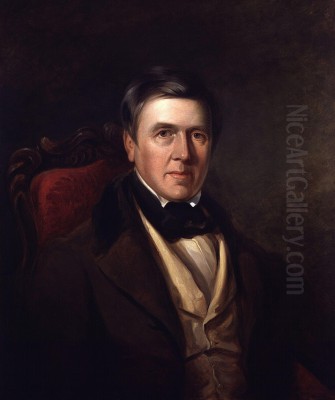
David Cox (1783-1859) stands as one of the most significant and beloved figures in the history of British landscape painting. A master primarily of watercolour, though also accomplished in oils later in his career, Cox captured the unique atmosphere, light, and weather of the British Isles with unparalleled freshness and vigour. Born in Deritend, near Birmingham, England, his nationality was British. He was a key member of the Birmingham School of landscape painters and is widely regarded as one of the principal artists of the Golden Age of English Watercolour. His work, often characterized by its directness and expressive handling, is also considered an important precursor to French Impressionism.
Formative Years and Early Career
David Cox's origins were modest. Born on April 29, 1783, his father was a blacksmith and his mother hailed from a farming background. The industrializing environment of Birmingham shaped his early visual experiences. Financial constraints meant his formal education was limited, and art became a potential avenue for advancement. It's noted he began drawing around the age of seven or eight, partly to contribute towards his schooling costs.
His initial formal art training commenced under Joseph Barber, a respected local artist and drawing master in Birmingham. Following this, Cox was apprenticed to a maker of lockets and miniature portraits, Albert Fielder. This phase aimed to equip him with skills in detailed work. However, this apprenticeship was cut tragically short by Fielder's suicide. This event forced the young Cox to seek alternative employment.
Around 1800, Cox found work painting scenery for William Macready the Elder, the manager of the Birmingham Theatre Royal. This experience proved formative. The need to create broad effects quickly, capture dramatic lighting, and work on a large scale significantly influenced his later landscape painting style. It instilled in him an understanding of atmospheric effects and compositional boldness that would become hallmarks of his art. Seeking greater opportunities, Cox moved to London in 1804.
Mastering Watercolour in London
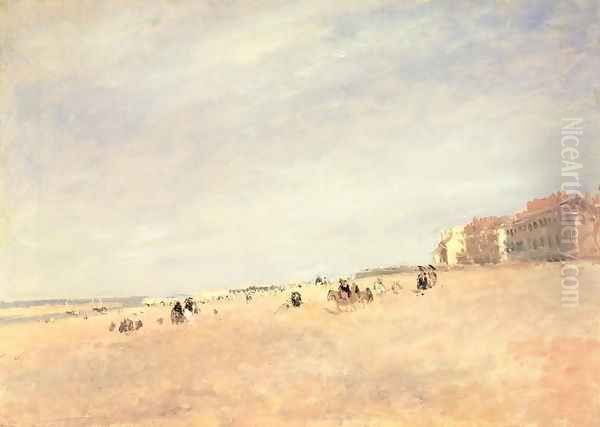
In London, Cox initially continued working in theatre, painting scenery for Astley's Theatre and the Surrey Theatre. However, his ambition lay in establishing himself as an independent artist. A crucial step in this direction was taking lessons from the prominent watercolourist John Varley in 1805. Varley's influence was significant, likely encouraging Cox towards a broader handling of watercolour and a focus on structured compositions, although Cox would soon develop his own distinct, more rugged style.
Cox began exhibiting his work, showing for the first time at the Royal Academy of Arts in 1805, an institution where he would continue to exhibit sporadically until 1828. More central to his career was his involvement with watercolour societies. He became an associate of the Society of Painters in Water Colours (often called the Old Water-Colour Society or OWS) in 1805 and a full member in 1809.
A brief period of disruption occurred when Cox, along with other artists, seceded to form the Associated Artists in Water Colours. He even served as president of this short-lived society in 1810. However, the Associated Artists group dissolved in 1812, and Cox rejoined the OWS (by then formally the Society of Painters in Water Colours) in 1813, remaining a loyal and prolific contributor for the rest of his life, exhibiting hundreds of works there.
During these years, Cox also supplemented his income by teaching. From 1814 to 1827, he lived in Hereford, serving as a drawing master at Miss Croucher's School for Girls and later at the Hereford Grammar School. He also took on private pupils. This period saw him solidify his reputation as a landscape painter, frequently sketching in the surrounding countryside and making regular trips to North Wales, which became a favourite sketching ground.
The Essence of Cox's Style: Nature and Atmosphere
David Cox's art is fundamentally rooted in a deep love and close observation of nature, particularly the changeable British weather. He moved away from the detailed, topographical style prevalent in earlier watercolour painting towards a more expressive and atmospheric approach. His primary aim was to capture the feeling of a place – the dampness in the air, the movement of wind through trees and across water, the fleeting effects of sunlight breaking through clouds.
His technique involved broad, fluid washes of colour, often applied with a directness and energy that conveyed the immediacy of his experience outdoors. He frequently worked with a limited palette, achieving rich tonal variations through layering washes and exploiting the texture of the paper. His brushwork could be bold and vigorous, sometimes described as "blottesque," yet always controlled and purposeful in defining form and suggesting texture.
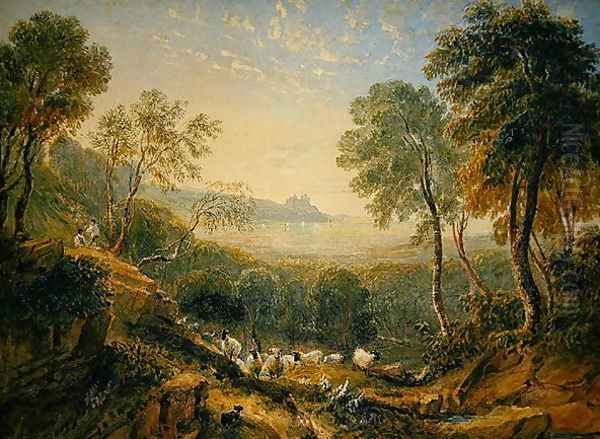
Unlike some contemporaries who idealized the landscape, Cox embraced its ruggedness and dynamism. His scenes often feature windswept moors, stormy skies, rustic figures battling the elements, or the tranquil light of early morning or late afternoon. He had a particular affinity for depicting skies, understanding their crucial role in setting the mood and defining the light of a landscape.
Evolution of Technique and Materials
Cox's style was not static; it evolved throughout his long career. Art historians often identify distinct phases:
His early work, up to around 1815-1820, shows the influence of his training and contemporaries like Varley. While demonstrating skill, these works can sometimes appear somewhat tighter in handling and more conventional in composition, occasionally retaining elements of the topographical tradition.
The middle period, roughly from the 1820s to the early 1840s, is often considered his classic watercolour phase. His handling became freer, his colours richer, and his ability to capture atmospheric effects reached its zenith. Works from this period demonstrate a masterful balance between observation and expressive interpretation. He frequently visited locations like Derbyshire, Yorkshire, and especially North Wales, finding endless inspiration.
In his later years, particularly from the mid-1840s onwards, Cox's style became even bolder and more experimental. This phase is most strongly associated with his status as a precursor to Impressionism. His brushwork grew looser, forms became more suggested than explicitly defined, and he used broken colour and a highly textured approach to convey the vibrancy of light and atmosphere.
A key element of his late style was his innovative use of paper. He famously favoured a type of rough, absorbent wrapping paper, often referred to as "Scotch" paper or "Crumple" paper. Its coarse texture resisted smooth washes, forcing the pigment to sit on the surface or sink unevenly, creating a unique, slightly gritty and sparkling effect that perfectly suited his depiction of rough weather and broken light. This deliberate choice of material was integral to the expressive power of his late watercolours.
Favourite Haunts: England and Wales
While Cox travelled occasionally on the continent, the vast majority of his work celebrates the landscapes of England and Wales. He was particularly drawn to the wilder, more rugged parts of the country, finding beauty in scenes that others might have overlooked.
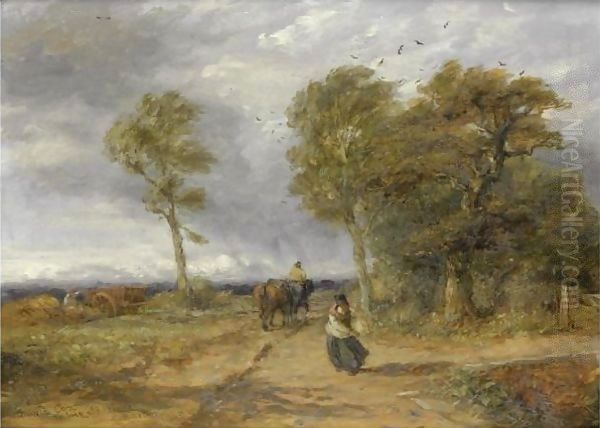
North Wales held a special place in his heart. From the 1820s onwards, he made almost annual summer sketching trips there, particularly favouring the area around Betws-y-Coed, Capel Curig, and Snowdonia. The dramatic mountains, rushing rivers, ancient castles, and changeable weather provided endless subjects. His depictions of Welsh landscapes are among his most iconic works, capturing both the grandeur and the intimacy of the region.
Other areas he frequently depicted include the Peak District in Derbyshire, the Yorkshire Moors, Haddon Hall (a favourite subject), and the countryside around his native Birmingham and later Hereford. Coastal scenes also feature in his work, often depicting breezy days on sandy shores or dramatic cliffs. His focus remained consistently on the interplay of landscape, light, and weather.
Ventures into Oil Painting
Although primarily renowned as a watercolourist, David Cox took up oil painting seriously relatively late in his career, around 1839. He was encouraged in this by younger artists, notably William James Müller, a Bristol-based painter known for his vigorous oil technique. Cox sought to achieve a greater sense of solidity and richness than he felt watercolour allowed, particularly for larger exhibition pieces.
He approached oils with the same directness and focus on atmospheric effect that characterized his watercolours. His oil paintings often feature thick impasto, energetic brushwork, and a concern for capturing the movement of light and weather. While some critics at the time, and subsequently, felt his oils lacked the unique delicacy and transparency of his watercolours, many are powerful and highly expressive works in their own right.
His oil paintings often revisited subjects he had previously explored in watercolour, such as scenes in Wales or views of Haddon Hall. Perhaps his most famous late oil painting is Rhyl Sands (c. 1854-55), a dynamic depiction of figures struggling against the wind on a vast, wet beach under a dramatic sky. This work exemplifies the energy and atmospheric intensity he brought to the medium. He continued to paint in oils alongside watercolour until his health declined.
Continental Journeys
While deeply rooted in the British landscape, Cox did undertake several trips to the European continent, broadening his horizons. In 1826, he travelled through Belgium and the Netherlands. In 1829, he visited Paris, and in 1832, he travelled again to France, reaching Calais and Dieppe.
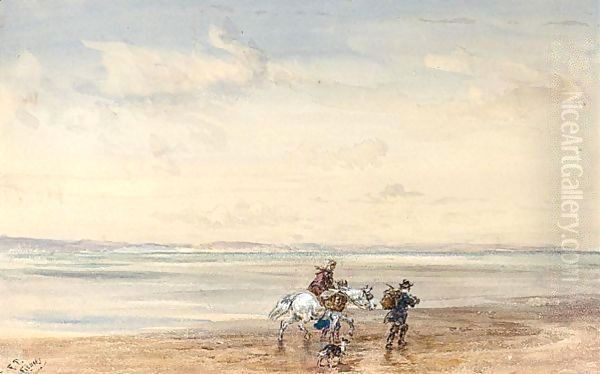
These trips resulted in a number of watercolours depicting continental scenes – market squares, churches, coastal views. While accomplished, these works generally form a smaller part of his overall output compared to his British subjects. The influence of these travels on his core style is subtle; he did not fundamentally change his approach but may have absorbed certain aspects of light or composition. His primary artistic identity remained firmly tied to the landscapes and atmosphere of Britain.
Signature Works
Identifying a few representative works from such a prolific artist is challenging, but several stand out for their quality and typicality:
Rhyl Sands (Oil, c. 1854-55, Birmingham Museums Trust): Arguably his most famous oil painting. A large, dynamic canvas showing figures bracing against the wind on the expansive sands at Rhyl, North Wales. It masterfully conveys the power of nature and the atmosphere of a blustery day on the coast.
Welsh Mountain Scene, Cader Idris (or similar Welsh mountain views, watercolour, various dates): Cox painted numerous views of the Welsh mountains. Works depicting Cader Idris or scenes around Snowdonia exemplify his ability to capture the scale, ruggedness, and dramatic weather of these locations using fluid washes and expressive brushwork. Titles like A Welsh Funeral, Betws-y-Coed also capture specific aspects of Welsh life within the landscape.
Harlech Castle (Watercolour and Oil, various dates): This iconic Welsh castle was a recurring subject. Cox depicted it from various viewpoints and under different weather conditions, often emphasizing its imposing silhouette against dramatic skies.
A Windy Day (Watercolour, c. 1850, Tate): This title represents a common theme. Such works typically show windswept trees, scudding clouds, and perhaps figures leaning into the wind, perfectly capturing the feeling of movement and atmospheric energy that Cox excelled at.
Crossing the Sands (Watercolour, various versions): Depicting travellers making their way across tidal estuaries or sands (like Lancaster Sands) was another favourite subject, allowing Cox to explore vast open spaces, reflections, and changing light.
These examples highlight his focus on atmosphere, his love for specific British locations (especially Wales), and his mastery of both watercolour and, later, oil. His works are held in major collections worldwide, including the Tate Britain, the British Museum, the Victoria and Albert Museum, the Birmingham Museums Trust, the Yale Center for British Art, and the Musée d'Orsay.
Educator and Author
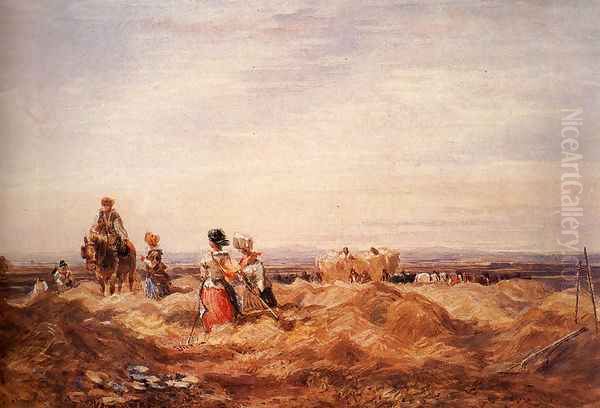
Beyond his own artistic practice, David Cox made significant contributions as an educator and author. His teaching activities, both institutional and private, spanned many years. More lasting, perhaps, was the influence of his instructional books, which were highly popular in their day and helped disseminate his approach to landscape painting.
His key publications include:
Ackermann's New Drawing Book (c. 1809)
A Series of Progressive Lessons Intended to Elucidate the Art of Painting in Water Colours (1811, with several later editions)
A Treatise on Landscape Painting and Effect in Water Colours (1814, considered his most important theoretical work)
The Young Artist's Companion (1825)
These books offered practical advice on composition, colour mixing, capturing effects of light and shadow, and depicting different elements of the landscape like trees, water, and skies. They were illustrated with examples, often aquatints based on his own drawings. Through these publications, Cox's methods reached a wide audience of amateur and aspiring professional artists, significantly shaping landscape watercolour practice in the 19th century.
Artistic Circles and Connections
David Cox operated within a vibrant artistic community. He was a central figure in the Birmingham School of landscape artists, a group active in the early to mid-19th century, known for their direct approach to nature. His long association with the Society of Painters in Water Colours (OWS/RWS) placed him at the heart of the watercolour establishment in London.
His direct artistic lineage includes his teachers Joseph Barber and John Varley. Varley, in particular, was a major figure who also taught other prominent watercolourists like Peter De Wint, Anthony Vandyke Copley Fielding, and John Linnell. Cox shared the OWS exhibition space with these artists, as well as others like Samuel Prout, known for his picturesque architectural scenes.
Cox was a contemporary of the giants of British landscape painting, John Constable and J.M.W. Turner. While distinct in their ultimate styles and ambitions, all three shared a profound engagement with the natural world and pushed the boundaries of landscape representation. Cox's focus on transient atmospheric effects aligns him more closely with Constable's naturalism, while his late, bold experimentation can be seen as parallel in spirit, if not technique, to Turner's explorations of light and colour.
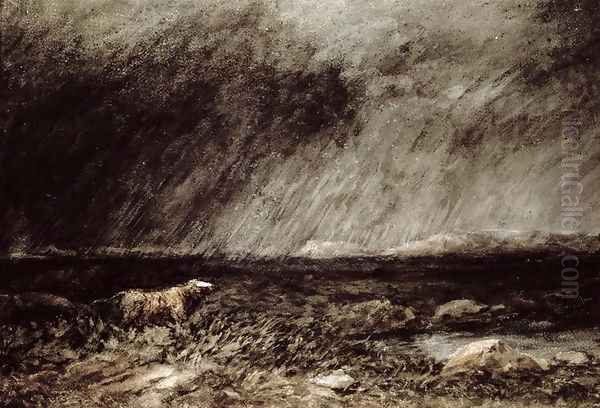
He encouraged and was encouraged by other artists. William James Müller prompted his serious engagement with oils. His own son, David Cox Jr. (1809-1885), became a competent watercolourist in his father's style. Later artists like William Parry-Dodds and Clyde Field were directly influenced by his work. Contemporaries like David Roberts, famous for his topographical views of the Near East, occupied different niches within the diverse London art world but would have moved in similar circles. The tradition Cox represented continued to influence later generations of British watercolourists, including figures like Albert Goodwin.
Later Years and Enduring Legacy
In 1841, David Cox retired from teaching and left London, returning to his Midlands roots. He settled in Harborne, then a village on the outskirts of Birmingham, where he spent the remainder of his life. This move did not signal an end to his artistic activity; indeed, some of his most powerful and experimental work, particularly in oil and his late watercolours using rough paper, dates from this period.
He continued to make annual sketching tours, especially to North Wales, almost until the end of his life. His health began to fail in the 1850s. He suffered a stroke in June 1853, which affected his eyesight and hampered his ability to work, though he continued to paint when possible. David Cox died at his home in Harborne on June 7, 1859, and was buried in the churchyard of St Peter's Church, Harborne.
During his lifetime, Cox achieved considerable respect within artistic circles, particularly among fellow watercolourists, and had a loyal following of patrons. However, his work, especially the bolder late style, was not always fully appreciated by the wider public or critics, and his paintings did not command the high prices achieved by some contemporaries.
The critical evaluation of his work evolved significantly after his death. By the late 19th century, his contribution began to be reassessed. His directness, his focus on capturing fleeting effects of light and weather, and the expressive freedom of his brushwork led to him being recognized as a major innovator and a crucial forerunner of Impressionism. Scholars increasingly highlighted his unique ability to convey the raw energy and atmosphere of the British landscape.
Today, David Cox is firmly established as a major master of British landscape painting. His watercolours are celebrated for their freshness, technical brilliance, and profound connection to nature. His late works, once misunderstood, are now admired for their boldness and proto-Impressionist qualities. He remains a beloved figure, whose art continues to evoke the distinctive beauty and dynamism of the British countryside.
Conclusion
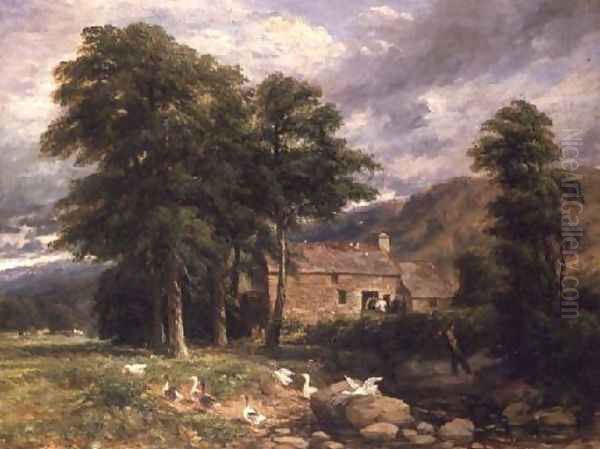
David Cox's journey from a scene painter in provincial theatres to one of Britain's foremost landscape artists is a testament to his talent, dedication, and unique vision. He perfected the art of watercolour, using it to capture the ephemeral qualities of light, weather, and atmosphere with unmatched vitality. His deep connection to the landscapes of England and Wales, combined with his innovative techniques and expressive style, produced a body of work that was both deeply personal and profoundly influential. While respected in his time, his full stature as a precursor to modernism and a master interpreter of the natural world has only grown with historical perspective. David Cox's paintings remain enduringly fresh, offering a timeless vision of the British landscape in all its moods.